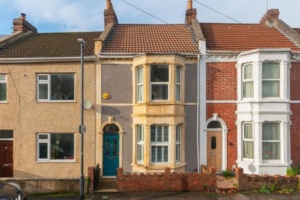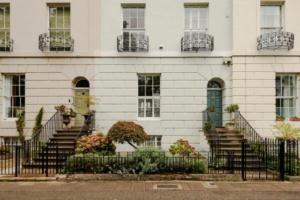The 10 cheapest areas for first-time buyers as mortgage rates remain high
Mortgage rates have been slowly coming down in the past year, but the end of stamp duty relief in England and Northern Ireland is now just weeks away.
The temporary stamp duty discounts are set to revert back to previous levels at the end of March, which means that more than 25,000 first-time buyers in England could be on track to miss the crucial deadline.
From April, first-time buyers purchasing homes priced at £425,000, will move from a nil-tax threshold to having to pay £6,250. This increases to £11,250 for homes priced between £500,001 and £625,000.
Wage growth has outpaced the rise in average asking prices for first-time buyer homes in the last five years. So, while this has slightly increased the borrowing power of first-time buyers, affordability remains very stretched. This is because, even with the gradual falls in mortgage rates, the average monthly first-time buyer mortgage payment (for a home with two bedrooms or fewer, based on a 30-year mortgage term) is still £350 (+59%) higher than 5 years ago
So, a typical first-time buyer is currently paying a mortgage of £940 per month, compared with £590 per month in 2020. Yet this is still £155 lower than the peak in July 2023.
The average five-year mortgage rate is now 4.69%, compared to 2.22% at this time in March 2020 and 6.11% in July 2023.
Our mortgage expert Matt Smith says: “Higher mortgage rates mean home-movers need to consider how much they can afford to pay each month on a monthly mortgage, even if they can meet the asking price of a home. Another measure of affordability which is restricting some first-time buyers from getting onto the ladder is how much they can borrow.
“It’s encouraging to see that the regulator is considering how they may be able to enable first-time buyers to borrow more in a responsible way, as we think this will help to unlock more opportunity, particularly for those with smaller deposits,” he adds.
10 cheapest areas for first-time buyers
For those who may be considering lower-priced areas that they can move to, Kilmarnock in Ayrshire, Scotland, has been named the cheapest area for a first-time buyer to get onto the property ladder. The average asking price for a typical first-time buyer home in Kilmarnock is just over £84,000.
Greenock in Inverclyde is second on the list, with an average asking price of £88,862. Grimsby in Lincolnshire is third at £93,427.
| Area | Average asking price for a first-time buyer home | Average asking price increase year-on-year |
|---|---|---|
| 1. Kilmarnock, Ayrshire | £84,325 | -1.0% |
| 2. Greenock, Inverclyde | £88,862 | +0.7% |
| 3. Grimsby, Lincolnshire | £93,427 | -1.2% |
| 4. Blackpool, Lancashire | £93,711 | 0.0% |
| 5. Middlesbrough, North Yorkshire | £95,473 | +0.8% |
| 6. Hartlepool, Tees Valley | £99,525 | +10.7% |
| 7. Paisley, Renfrewshire | £99,570 | +2.3% |
| 8. East Kilbride, Glasgow | £100,814 | +4.1% |
| 9. Ayr, Ayrshire | £101,391 | +1.0% |
| 10. Burnley, Lancashire | £102,848 | +6.2% |
What do the stamp duty changes mean for home-movers?
The impact of the stamp duty changes varies significantly depending on house price, and whether you’re a first-time buyer. First-time buyers purchasing homes between £500,001 and £625,000 face the biggest potential impact, with an extra £11,250 added to their moving costs if they miss the end of March deadline.
In February, there were more than 550,000 homes sold awaiting legal completion – 25% more than at the same time last year. This has led to concerns about a potential conveyancing ‘log jam’ as buyers rush to complete before the deadline, particularly in London, where there are 28% more first-time buyers currently going through the home-buying process compared to last year.
The average time to complete a property transaction remains around five months, meaning many buyers have been working against the clock since November to meet the deadline. We’re hearing from estate agents that while some buyers may need to pull out of their transactions if they miss the deadline, many are proceeding with their purchases regardless, having factored in the potential additional costs.
How much can you borrow with a mortgage?
The amount you can borrow with a mortgage is determined by an affordability assessment and your interest rate is determined by the amount of deposit you have, otherwise known as loan-to-value (LTV).
LTV is expressed as a percentage, and it reflects the size of the mortgage you need as a proportion of the value of the home you want to buy. The bigger the deposit you have, the lower the LTV, and vice-versa.
A good way to find out how much you could borrow is to use a Mortgage Calculator. And to get a personalised result by applying for a Mortgage in Principle which will take you one step closer to a mortgage offer.
Read more about the different types of mortgages and how to choose a mortgage term that meets your needs, both now and in the future.
The header image for this article was provided courtesy of eXp UK, East of England.
Please note: Your home may be repossessed if you do not keep up repayments on the mortgage. Early Repayment Charges may apply if you leave your current mortgage during the fixed-rate period. Rightmove is not authorised to give financial advice; the information and opinions provided in these articles are not intended to be financial advice and should not be relied upon when making financial decisions. Please seek advice from a regulated mortgage adviser.



